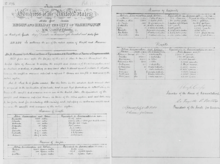Everyday with Metric

Consumers have varying levels of awareness of measurement in daily life. Since the National Bureau of Standards (NBS, now NIST) Mendenhall Order in the late 1800's, many everyday measurements have been traceable to metric units. Many are not aware that "below the surface" the SI is the foundation for all measurements or of the extent the SI is used by industry to manufacture and supply the goods and services we all use every day. While it’s true that metric use is mandatory in some countries and voluntary in others, all countries have recognized and adopted the SI, including the United States. Busting Myths about the Metric System explores several common misconceptions about U.S. Metrication.
Metrication Progress

Metrication, metric transition, metric conversion, or metrication are terms used to describe moving from use of local, traditional, or customary units of measure to the SI. Current U.S. metrication projects, best practices, case studies, errors and mishaps and much more is available. Metric transition accelerated shortly after the 1975 Metric Conversion Law was enacted and national Metric Policy was established to increase the voluntary use of the metric system as the preferred system of measurement for trade and commerce. One of the first industry sector transitions occurred with Distilled Spirits & Wines, where transition was initiated by U.S. industry and coordinated by the U.S. Department of Treasury. Distilled Spirits and Wines have been successfully sold exclusively and accepted by U.S. consumers in metric units since the early 1980's. To learn more, explore the answers to metrication frequently asked questions (FAQs).
SI Everyday
Learn and use the SI to elevate every day with these practical life hacks:
Use of SI measurements includes areas such as media reports (e.g., stories concerning global warming refers to metric tons of CO2 emissions, military deployments using kilometers), time (second), electric current (ampere, volt, ohm & watt), sports (track and field, cycling, international competition), package labeling (especially beverages), healthcare (blood pressure, cholesterol levels, glucose measurements, prescription and over-the-counter medicines, and dietary supplement dosages), automotive (engines, tires, navigation systems, speedometers), and other consumer products (cameras, film, pens). U.S. consumers are familiar with grams and milligrams through information provided on mandatory nutritional labeling. Advertising, coupons, and consumer product packaging are increasingly found using metric units exclusively.
EXPLORE THE METRIC PROGRAM
Becoming Familiar with SI | Everyday Estimation | Metrication FAQs | Prefixes | Metric Kitchen | SI Education and Training | SI Publications | Understanding Metric | Writing with Metric Units | National Metric Week | NEST-R (STEM Registry) | NIST Education Resources
Contacts
-
Metric Program


